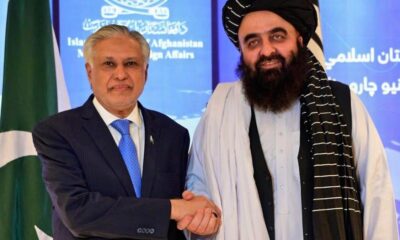Motivation
How to Hire Top Talent and Create a Culture They’ll Never Want to Leave

Throughout my career, I’ve seen firsthand how big tech companies prioritize hiring the best talent and how this focus drives business success
At IBM, Yahoo, Google, and Microsoft, top executives are personally involved in recruiting, recognizing that exceptional individuals elevate the entire organization.
But hiring great people is only part of the equation. Developing talent and structuring careers strategically is just as crucial. High-performing engineering teams thrive when individuals are placed in roles that both inspire them and align with their strengths. I often joke that leading an engineering team full of exceptional professionals is easy, the real challenge lies in building and sustaining such a team.
The presence of inspiring professionals is a catalyst for innovation. These individuals may create groundbreaking solutions that transform a business, drive massive cost savings, or unlock entirely new markets. While such breakthroughs are rare, they happen and companies must create the right conditions for them to emerge.
Beyond innovation, inspiring professionals shape company culture. They act as mentors, developing future leaders, and serve as magnets for talent — either because they attract followers or because they have a keen eye for identifying the right hires.
A great analogy comes from the world of art. Candido Portinari, one of Brazil’s most celebrated painters, was commissioned in 1952 to create the War and Peace panels for the United Nations headquarters in New York. The Brazilian government didn’t micromanage his work, dictate colors, or designate placement. They trusted his talent.
The same principle applies to engineering. Exceptional professionals are artists in their craft, and they need the freedom and conditions to excel. Hiring great talent isn’t enough, they must also have the autonomy and the right environment to do their best work. When people are motivated and aligned with the company’s mission, exceptional results follow naturally.
Distinguishing multipliers vs. diminishers
In their book “Multipliers,” Liz Wiseman and Greg McKeown describe two types of leaders:
Multipliers create conditions for their teams to thrive. These leaders empower employees, allow them to learn from mistakes, and intervene only when necessary to prevent disasters. Multipliers think about the company’s big picture, foster collaboration, and build sustainable processes. They bring in new talent and get the best out of those around them.
Diminishers, on the other hand, are micromanagers focused on control and self-promotion. The tech industry has many professionals who, after years of being treated as the smartest person in the room, become centralizing, controlling leaders. I’ve encountered countless “prima donnas” with these traits throughout my career.
The truth is, at different moments in our careers, we can all act as either multipliers or diminishers. The key is self-awareness, continuously assessing our behavior, understanding our motivations, and making conscious efforts to be more effective motivational leaders.
Microsoft’s CEO Satya Nadella often says that he sees three essential characteristics in leaders
The first is that the leader can see their way out of complex situations and describe in a few words what’s essential and what needs to be done. The second characteristic is that those who lead must generate good energy not in the esoteric sense, but in extracting from the team the potential it must produce, very much in the spirit of the multiplier leaders described by Wiseman and McKeown. The third characteristic is that good leaders deliver results. They make things happen, promote innovation, balance short and long-term projects, and inspire.
It involves creating an environment where individuals can thrive. Inspired professionals not only drive innovation but also shape company culture and attract other high performers. Leaders that play a crucial role in enabling success are multipliers who empower and uplift teams. Diminishers, however, micromanage and stifle potential.
The best leaders, as exemplified by Satya Nadella’s principles, clarify complex situations, generate positive energy, and deliver results. Self-awareness and intentional leadership are key to sustaining high-performing teams.
-

 Destination8 months ago
Destination8 months agoSingapore Airlines CEO set to join board of Air India, BA News, BA
-

 Breaking News10 months ago
Breaking News10 months agoCroatia to reintroduce compulsory military draft as regional tensions soar
-

 Gadgets3 months ago
Gadgets3 months agoSupernatural Season 16 Revival News, Cast, Plot and Release Date
-

 Tech News12 months ago
Tech News12 months agoBangladeshi police agents accused of selling citizens’ personal information on Telegram
-

 Productivity11 months ago
Productivity11 months agoHow Your Contact Center Can Become A Customer Engagement Center
-

 Gadgets3 weeks ago
Gadgets3 weeks agoFallout Season 2 Potential Release Date, Cast, Plot and News
-

 Breaking News10 months ago
Breaking News10 months agoBangladesh crisis: Refaat Ahmed sworn in as Bangladesh’s new chief justice
-

 Toys12 months ago
Toys12 months ago15 of the Best Trike & Tricycles Mums Recommend























